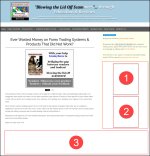- Home
- Trading Strategies
- Ten Facts about the Whisper Number
Ten Facts about the Whisper Number
(www.mtrading.my)
The whisper number is the term for the unpublished forecast of a particular company’s earnings; if you regularly talk to professionals in the foreign exchange market, you may have circulated whisper numbers already. Especially if you’re avoiding the consequences of wrong market predictions, compiled information about it can be very useful.
Here’s a list of ten facts about the whisper number:
1. It is called the whisper number, since it suggests that it’s only heard and circulated, but it is yet to be released officially.
2. It is unpublished and unofficial, but it is by far, an informative breakdown of a company’s EPS (or earnings per share).
3. It is very profitable when its numbers are far from the official EPS report.
4. It is the news meant for wealthy people in the forex market; before an EPS report is featured on Wall Street, some of the rich traders and brokerage firms get notified of its contents.
5. It can be used for spotting (or totally avoiding) unexpected results (regardless of them being positive or negative). However, it is dependent on the particular sources; it is irrelevant if there is a track record of accuracy of the official EPS.
6. It is said to be the real analysis of a trader; it is believed by some to be more accurate compared to the official report. Due to this, some traders don’t rely on the EPS news on Wall Street; rather, they approach their fellow traders.
7. While it is reliable, it can sometimes be misused. For instance, a trader will place a bid based on it, beat estimated figures, yet still not come
close to the actual EPS number. Due to this, a number of professional traders are discouraged from passing it around.
8. Rules and regulations were set to combat its threat of market corruption. Traders who are working for major companies are required to follow strict procedures and are forbidden to disclose financial data of sorts.
9. By the Wall Street Journal and Bloomberg News, it was revealed that some websites are dedicated to the discussions of whisper numbers.
10. It was discovered to have a significant effect to a trade. In the early 2000s, traders who relied on it gained at least 2% advantage on a single day; traders who preferred to anticipate official EPS reports
gained only a tenth compared to the advantage of the first batch of traders.





